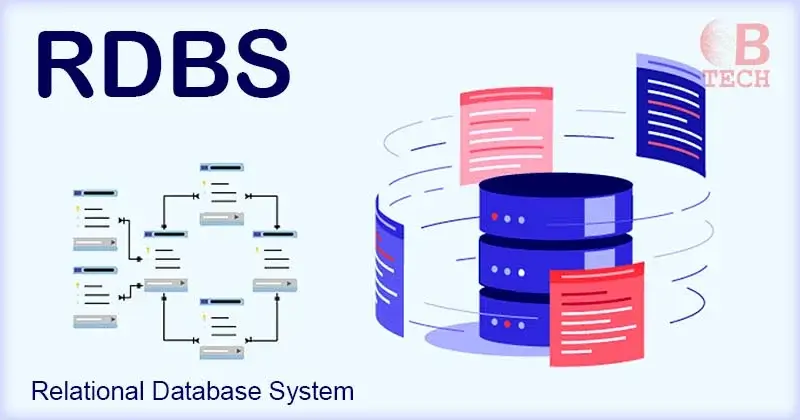Understanding RDBS: Different Meanings
1. Relational Data Base System (RDBS)
The term “RDBS” commonly stands for Relational Data Base System, also seen as “RDB.” It refers to a type of database management system that organizes data into tables with well-defined relationships between them.
2. Radio Data Broadcasting System (RDBS)
In the context of cars, “RDBS” can stand for Radio Data Broadcasting System. This system is utilized in vehicles to receive and process radio signals for broadcasting data, such as traffic updates, weather information, and news.
3. Routing Data Base System (RDBS)
RDBS may also refer to Routing Data Base System, which is used to create the Local Exchange Routing Guide (LERG). This system plays a crucial role in managing and routing telecommunications data.
4. Royal Danish Ballet School (RDBS)
In Denmark, RDBS stands for Royal Danish Ballet School. It is an institution dedicated to the training and education of ballet dancers, fostering talent and artistic development within the field of ballet.
5. Rapid Deployment Barrier System (RDBS)
Rapid Deployment Barrier System (RDBS) is a type of security mechanism designed to swiftly deploy barriers for crowd control, perimeter security, or other similar applications.
Understanding Relational Databases: A Brief Overview
A relational database, often abbreviated as RDB, is essentially a structured collection of data stored in tables, with each table consisting of rows (records) and columns. These databases are designed to establish clear relationships between different sets of data, making it easier to organize and retrieve information as needed.
How Relational Databases Work?
In a relational database, various tables interact with each other, sharing data and establishing connections based on predefined relationships. This setup allows for efficient searching, sorting, and reporting of data, which is crucial for many applications.
Structured Query Language (SQL)
Relational databases rely on Structured Query Language (SQL) as the primary means of interacting with the data. SQL serves as a standard programming interface, enabling users to perform various operations such as inserting, updating, deleting, and querying data within the database.
SSIS 816 – Everything You Need To Know About
Origins and Development
The concept of a relational database originates from the mathematical principles of data mapping, as proposed by Edgar F. Codd. Over time, it has evolved into a widely used and standardized approach for managing data in various applications and industries.
In essence, relational databases serve as a foundational tool for organizing and accessing data efficiently, providing a structured framework for handling vast amounts of information in a logical and coherent manner.
Exploring Table Relations of RDBS
Relational databases (RDBs) organize data in various ways. In this setup, each section is referred to as a relation, representing different data categories. Every record,holds a unique instance of data corresponding to the categories defined. Additionally, these records establish functional dependencies, which can be classified into several types:
- One-to-One: Where one record relates to another record.
- One-to-Many: In this scenario, one record is is associated with multiple records.
- Many-to-One: Here, multiple records relate to a single record.
- Many-to-Many: Multiple records are connected to multiple records.
Database Operations: Select, Project, and Join
Relational databases perform key operations such as “select,” “project,” and “join,” each serving a distinct purpose:
- Select: Used for retrieving specific data from the database based on specified criteria.
- Project: Identifies and retrieves specific attributes of data.
- Join: Combines the related based on common fields to provide a comprehensive view of the data.
Advantages of Relational Databases
Relational databases offer several advantages, including:
- Easy Extendability: New data can be added to the database without necessitating modifications to existing records, providing scalability.
- Enhanced Performance and Flexibility: RDBS offer improved performance, power, and flexibility, catering to various data requirements with the advent of new technologies.
- Data Security: Ensuring the security of data is crucial, particularly when it comes to privacy concerns. For instance, RDBS allow for the management of data privileges, granting access to certain data while restricting others, such as confidential salary or benefit information, from unauthorized personnel.
FAQs About RDBS
1. What is a relational database system (RDBS)?
RDBS stands for Relational Database System, a type of database management system that organizes data into tables with defined relationships.
2. How does RDBS work?
RDBS allows for efficient organization and retrieval of data by establishing relationships between tables and performing operations like select, project, and join.
3. What are the advantages of RDBS?
Advantages include easy extendability, enhanced performance, flexibility, and robust data security features.
Conclusion
RDBS revolutionizes data management by offering a structured framework for storing and retrieving information efficiently. With its versatility, scalability, and robust security features, RDBS continues to be a cornerstone in various industries, driving innovation and facilitating seamless data operations.
Also Read: Mercoffdaperc Leak: Uncovering The Biggest Data Breach



